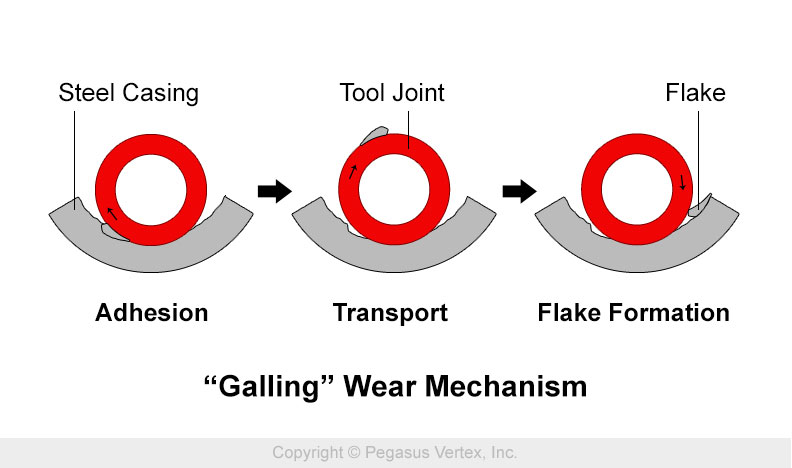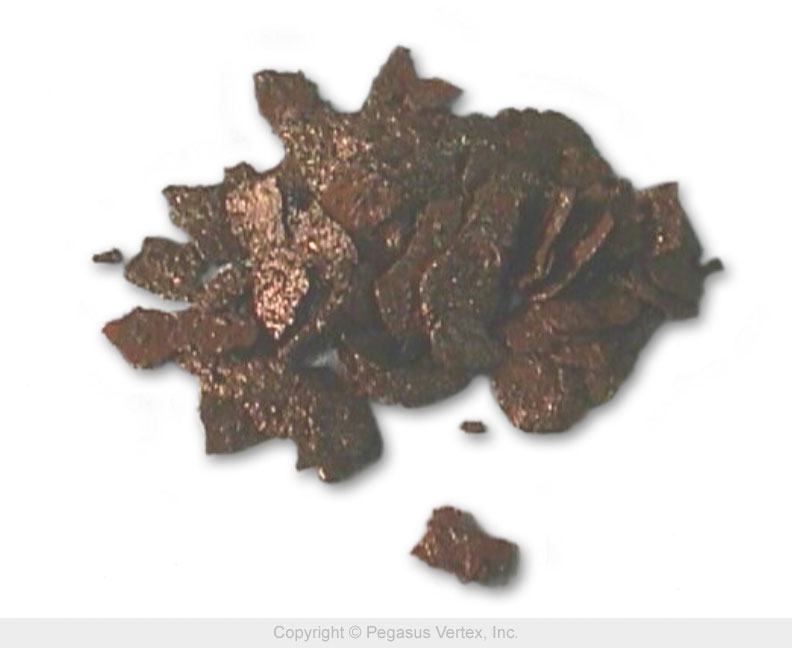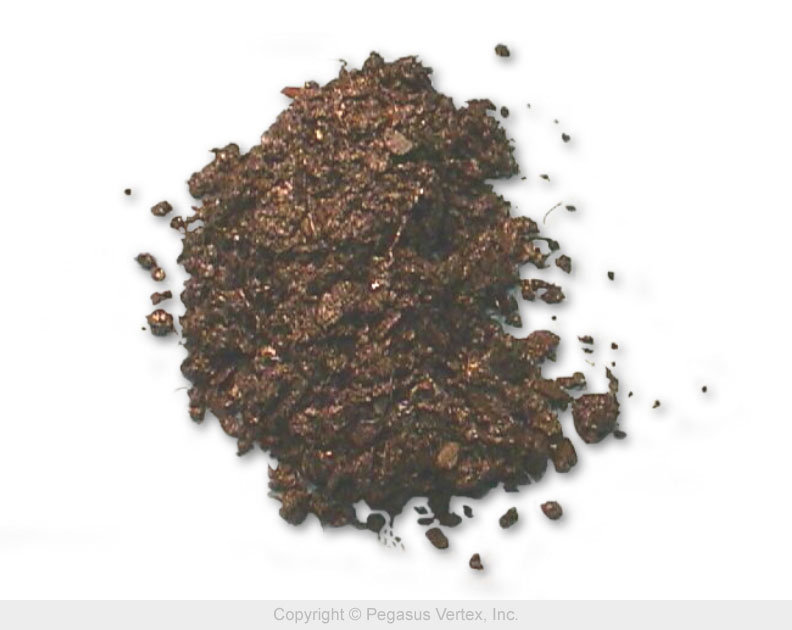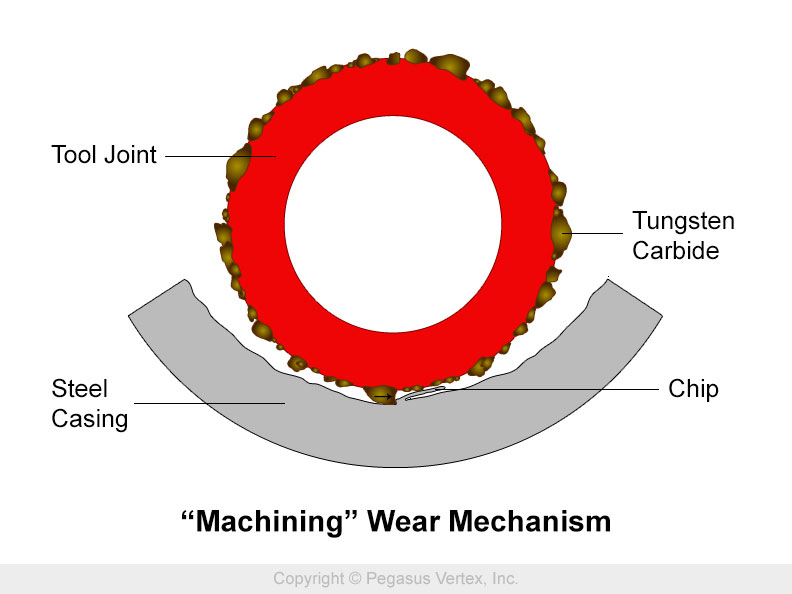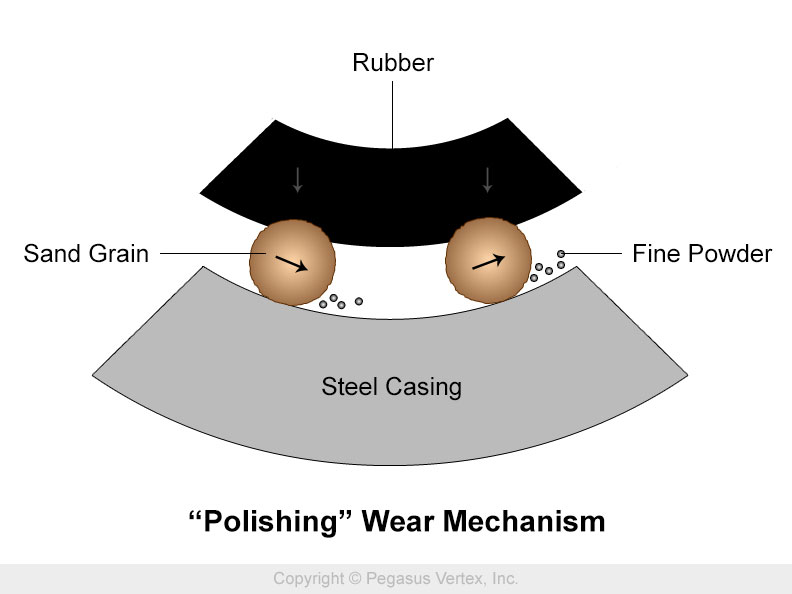A mud magnet is a bar magnet that looks a lot like an elongated brick.
They are installed in the return mud line just upstream of the possum belly and the shale shaker. Their purpose is to collect steel particles from the mud stream. Once or twice each day, the magnet is retrieved, scraped, and the collected particles washed, weighed, and examined.
From visual examination of the particles retrieved from the mud magnet, the casing wear mechanism can be identified. The four possible mechanisms are (1) galling, (2) machining, (3) grinding, and (4) polishing.
1. The galling process is shown in Figure 1, and the flakes resulting from this process are shown in Figure 2. High contact pressure forces the tool joints and casing together in intimate contact. As the tool joint rotates it is `cold welded’ to the casing. Further rotation pulls pieces from the casing. These pieces are later dislodged during further rotation of the tool joint. This is a very aggressive form of casing wear.
The flat flakes shown in Figure 2 are typical of the results of galling wear.
If these flat flakes continue for any length of time, you have serious trouble.
2. The grinding process is shown in Figure 3, and the particles resulting from this process are shown in Figure 4. Here the drill cuttings (sand) carried by the mud stream roll between the tool joints and casing. If the contact pressure is high enough, the yield strength of the casing (and sometimes the tool joints) will be exceeded, resulting in surface fracturing of both casing and tool joints.
The result of this grinding process, shown in Figure 4, is a metallic powder, varying from coarse to fine. If you are using `unhardbanded’ steel tool joints, grinding will be the dominant form or casing wear that you will see.
Judging the significance of the daily weight of material harvested from the mud magnets is a matter of experience. I know of no way to relate the daily mud magnet collection to the total daily amount worn from the casing. Sudden increases of grinding debris are a matter of concern.
One thing: check with the on board geologist. A sudden increase in the volume collected from the mud magnets may be the result of drilling into a formation containing magnetic minerals – probably one of the several iron oxides. (FeO, Fe2O3, Fe3O4, ….)
3. The machining process is shown in Figure 5, and the metallic strings harvested from the mud magnets are shown in Figure 6. This wear results when the tool joints are hardbanded with an alloy containing tungsten carbide particles. The softer base alloy wears away, leaving the carbide particles exposed. These particles scrape material from the casing, much as a rasp removes material.
Carbide hardbanded tool joints are no longer run in casing, although they offer excellent protection for the tool joints. If cuttings such as these appear in the material harvested from the mud magnets, you have a serious problem.
4. The polishing process is shown in Figure 7. Here the abrasive particles are imbedded in the surface of an elastic supporting material such as pitch, paper, beeswax or rubber. This is the process used to erase the results of grinding from an optical surface. In the oil field, this wear results when rubber pipe protectors are run. Instead of a wear groove, polishing will result in a mirror finish stripe running axially along the inner wall of the casing.
If you wish to use pipe protectors to protect intermediate casing, it is suggested that the first bit run out of casing be run without the protectors. This will allow the tool joints to wear away the layer of oxidation and mill scale from the area of the casing where the pipe protectors will contact the inner wall. If this is not done, the friction factor between the pipe protectors and oxide layer will be so high – 0’5 to 0.8 – that it may be impossible to rotate the drill string. After the mill scale and oxide layer is removed from the casing, the friction factor between rubber protectors and casing can be as low as 0.1.
If it weren’t for the chemical and thermal limitations of the rubber protectors, they would be the ideal means to minimize casing wear.
I have no pictures of the very small metallic particles which result from the polishing process. They are similar to the grinding debris shown in Figure 4, but much smaller.

